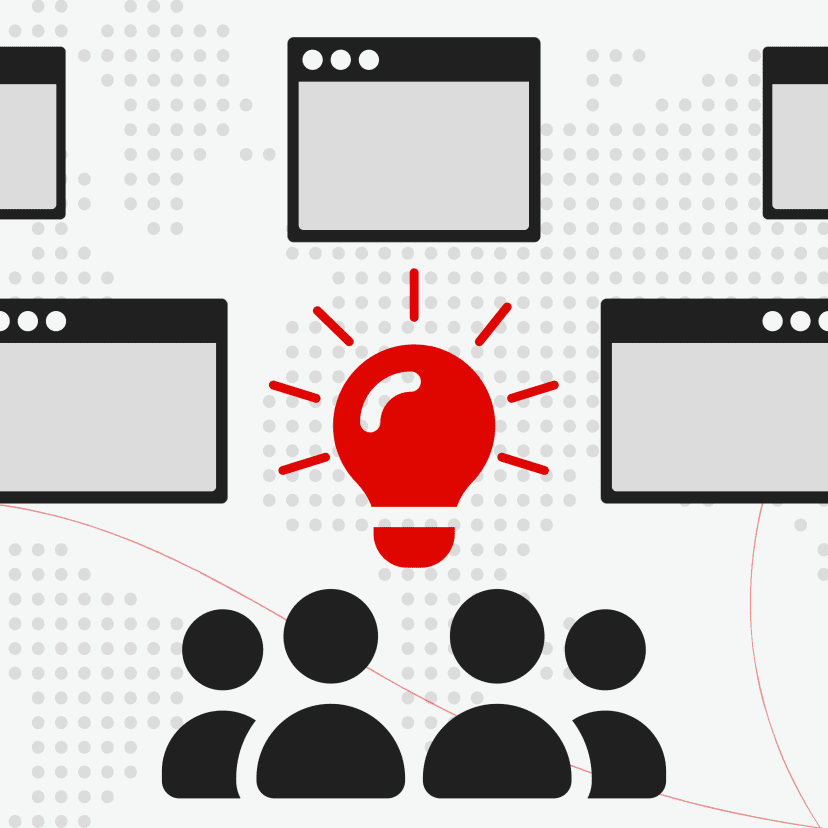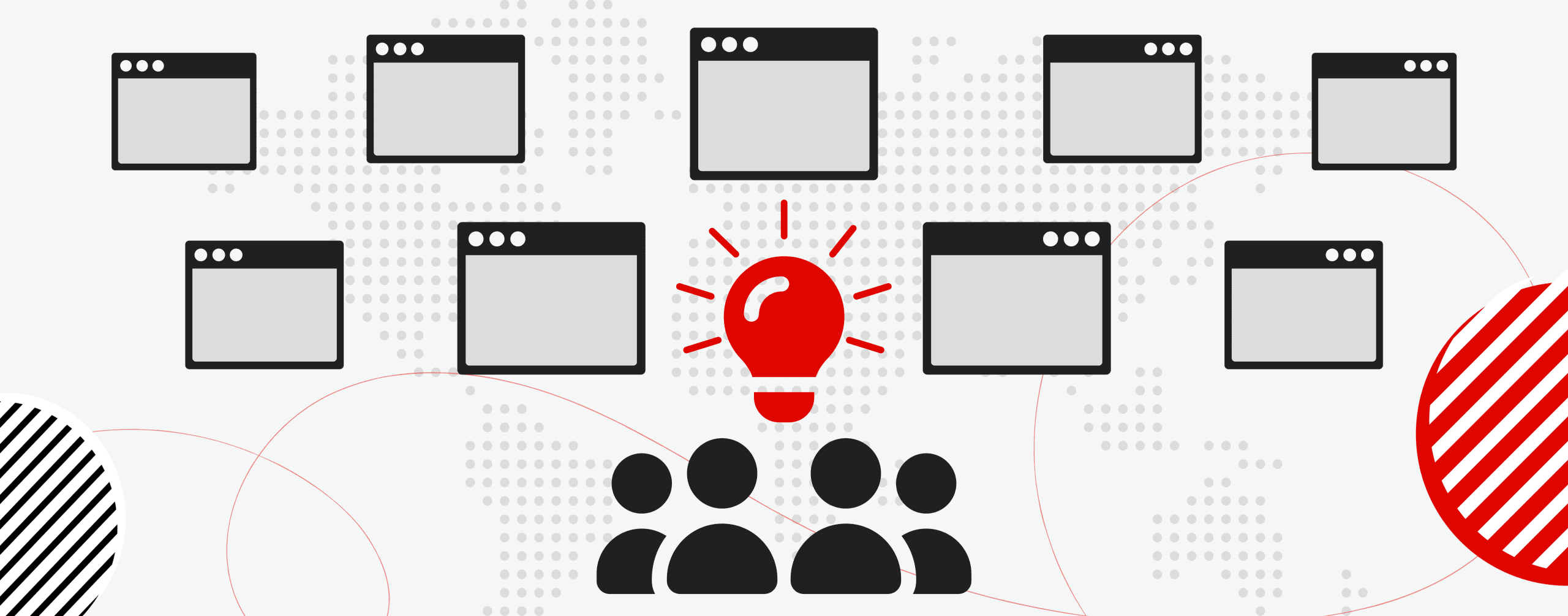
15 B2B Ecommerce Website Examples & What Your Can Learn From Them
Laura
Buzin

Unlike B2C websites, which are built for quick, one-off sales, B2B sites are designed to support complex purchase processes, long-term relationships and high-volume orders. Where B2C shoppers often browse and buy once, B2B transactions are driven by ongoing reorders of consistent products in specific quantities. These sites often include features like customer-specific pricing, account-level permissions, request-for-quote tools and backend integrations with ERP or CRM systems.
If your team is still entering most orders manually via phone or email, you’re resting on outdated processes while buyers expect top-notch online experiences. With more than half of B2B revenue projected to come from digital by 2025, clean, ERP-integrated ecommerce platforms have gone from nice-to-have to essential.
By integrating front-end storefronts with ERPs (like Acumatica or Microsoft Dynamics), businesses drastically reduce manual order entry and errors—freeing internal teams from tedious tasks. As digital adoption accelerates, the fastest-growing B2B sellers are those who make ecommerce a seamless part of sales—not an add-on.
Platforms like k-ecommerce are built around this principle, enabling real-time pricing, buyer-specific catalogs and quote workflows directly integrated with Microsoft Dynamics and Acumatica—enabling faster order cycles, lower processing costs and improved buyer satisfaction.
What Makes a Successful B2B Ecommerce Website?
Following the best practices for B2B ecommerce success and investing in a robust ecommerce platform that simplifies complex transactions, supports internal workflows and delivers real-time visibility across accounts gives B2B buyers the consumer-level convenience they expect — with the enterprise-level control they need to manage large, recurring orders.
Here are the key features that set successful B2B ecommerce platforms apart:
Customer-Specific Pricing & Catalogs
- Personalized pricing based on contracts or segments
- Customer-specific catalogs with exclusive access
- Reduces ordering errors and supports negotiated terms
ERP, CRM & Inventory Integration
- Real-time sync of pricing and stock levels
- Eliminates manual updates and backorder issues
- Supports accurate order management
Reordering & Account Tools
- Saved lists and quick reorder functionality
- Request-for-quote tools for custom orders
- Approval workflows and multi-user permissions
Navigation & Search
- Faceted filtering for large, spec-heavy catalogs
- Strong search that supports part numbers or technical terms
- Clear site architecture for fast product discovery
Mobile & Multichannel Support
- Mobile-optimized interfaces for buyers on the go
- Self-service dashboards with full account visibility
- Consistent experience across devices and sales channels
These core features help transform a basic product catalog into a high-performing B2B ecommerce platform — one that supports the way businesses actually buy. For a deeper look at essential features, explore the building blocks of top B2B ecommerce sites.
Industry-Specific Approaches to B2B Ecommerce
Ecommerce isn’t one-size-fits-all. A B2B platform that works for an electronics distributor won’t meet the needs of a medical supplier or office product vendor. Successful B2B ecommerce website development depends on customizing the experience to match how each industry buys, budgets and reorders.
Manufacturing & Distribution
Complex pricing tiers and contract-based pricing
Bill-of-materials configurations and bulk order tools
Distributor portals and ERP-integrated ordering workflows
Medical & Pharmaceutical
- Gated content to control access to regulated products
- Documentation downloads (e.g., SDS, FDA certifications)
- Role-based account access to support compliance and review processes
Technology & Electronics
- Part cross-referencing and compatibility tools
- Quote generation for high-value or build-to-order items
- Faceted filtering and search tuned for SKU-heavy catalogs
Industrial Supply & MRO
- Real-time inventory visibility by location or branch
- Job-site delivery scheduling and mobile-friendly ordering
- Repeat ordering tools for high-frequency replenishment
Office Supply & Consumables
- Punchout catalog integration with procurement platforms
- Saved lists, approval hierarchies and budget controls
- Easy access to high-volume reorder items across departments
These industry-tailored strategies show how flexible platforms, smart features and thoughtful UX come together to meet real-world B2B buying demands. The following examples highlight how top brands bring these ideas to life, offering purpose-built B2B ecommerce website inspiration for companies looking to improve their digital experience.
15 Great Examples of B2B Ecommerce Websites
The best example of B2B ecommerce websites includes those that go beyond just listing products — they provide purpose-built tools that simplify complex buying processes. In the examples below, you’ll see how leading B2B brands like Grainger, 3M and Amazon Business use smart features such as account-based pricing, real-time inventory and industry-specific portals to meet the needs of professional buyers.
These examples highlight how effective web design, backend integration and B2B-specific functionality come together to create exceptional buying experiences across industries.
Grainger | Industrial Supply & Maintenance
Grainger is a top choice for MRO and industrial buyers needing high-frequency, large-scale orders. As one of the best-known industrial ecommerce websites, its platform stands out for deep procurement integration and user-specific experiences that simplify complex workflows.
What Stands Out:
- Technical product filtering and contract-based pricing
- Real-time inventory tied to local distribution centers
Why It Works
Grainger helps enterprise buyers manage thousands of SKUs across locations without friction. Role-based access, approval workflows and ERP integration ensure speed, accuracy and control across procurement teams.
Pro Tip: Support customers with complex org charts by combining real-time inventory and account-specific pricing.
3M | Healthcare, Manufacturing & Technical Products
3M delivers tailored B2B experiences through segmented portals by industry — from healthcare and electronics to transportation and energy. Each portal highlights only the tools and products relevant to that buyer.
What Stands Out
- Industry-specific portals and in-browser product configurators
- Gated CAD files and technical docs for approved users
Why It Works
3M solves the complexity of technical purchasing with guided navigation, gated specs and configurators. Engineers and lab managers can find the exact part they need without sorting through irrelevant SKUs.
Pro Tip: Selling into technical fields? Segment your site by industry and gate content to serve power users with precision.
HP Business | Technology, Devices & IT Services
HP Business is built for IT managers and procurement leads sourcing tech at scale. The platform combines product sales with services like quoting, financing and support, making it ideal for companies managing fleets of devices.
What Stands Out
- Quote-based ordering and volume discounts
- Bundled products with integrated service options
Why It Works
HP’s site aligns with how IT teams buy: building quotes, managing assets, and ordering under contract. Segmentation by business size and industry keeps navigation relevant, while post-sale support builds long-term value.
Pro Tip: Selling hardware or tech services? Pair ecommerce with quoting and lifecycle support to become a full-service partner.
Amazon Business | Multi-Industry Procurement & SMB Solutions
Amazon Business brings marketplace ease to complex B2B buying. It serves everyone from startups to enterprises with tools that simplify recurring purchases while maintaining governance and oversight.
What Stands Out
- Multi-user accounts with role-based controls
- Tax-exempt buying, spend tracking and punchout integration
Why It Works
Procurement teams love Amazon Business for its familiar interface and built-in controls. Users can create shared lists, get guided suggestions and plug into platforms like Coupa or SAP for seamless workflows.
Pro Tip: Blend B2C simplicity with B2B controls to offer fast purchasing without sacrificing accountability.
Alibaba | Global Manufacturing & Wholesale
Alibaba simplifies global sourcing for B2B buyers looking for raw materials, bulk goods or custom manufacturing. Its platform removes barriers in international trade, from pricing and logistics to supplier vetting.
What Stands Out
- Request-for-quote (RFQ) system for custom or high-volume orders
- Verified supplier profiles and trade assurance tools
Why It Works
International procurement is risky. Alibaba eases the process by combining vendor discovery, quote management and logistics support in one place. For businesses sourcing abroad, it’s a trusted platform that brings transparency to cross-border deals.
Pro Tip: If you connect global buyers and suppliers, build tools for RFQs, vetting and logistics to reduce friction and risk.
Ferguson | Plumbing, HVAC & Commercial Construction Supply
Ferguson is built for the jobsite. Contractors and project managers rely on it for time-sensitive orders, precise availability and mobile-friendly ordering.
What Stands Out
- Local inventory visibility and jobsite delivery tracking
- Saved carts and lists for recurring project needs
Why It Works
Ferguson aligns with how tradespeople buy. Whether they’re searching by part number or browsing by trade, users can confirm availability and schedule same-day delivery from local branches. That speed and reliability wins loyalty.
Pro Tip: Serve field-based buyers? Optimize for mobile, local stock visibility and fast fulfillment tied to jobsite demands.
Quill | Office Supplies & Workplace Essentials
Quill is designed for office admins in small and mid-sized businesses who manage everyday supply needs. From paper goods to cleaning supplies, it simplifies reorders, spend controls and internal requests.
What Stands Out
- Multi-user accounts with purchase approvals and role-based controls
- Tiered pricing and volume discounts tied to account activity
- Ink & Toner Finder and saved lists for fast reordering
Why It Works
Quill supports admins managing fulfillment across departments. Team members can request items, but budget owners keep final approval. Smart tools like contract pricing, reorder automation and live support make it easy to manage supply closets without a formal procurement team.
Pro Tip: If you serve SMBs, build tools that simplify reorders and approvals while supporting decentralized teams.
Steelcase | Commercial Furniture & Workplace Design
Steelcase blends ecommerce with space planning. Its platform helps architects and facilities teams design and order workspaces at scale.
What Stands Out
- Modular product listings with space planning tools
- Industry filters for healthcare, education, law and more
- Dealer integration for quotes, fulfillment and installation
Why It Works
Furniture purchases involve big budgets and detailed specs. Steelcase offers visualization tools, curated environments and quote workflows to guide buyers from concept to delivery. It’s not just a store — it’s a planning and procurement tool for complex projects.
Pro Tip: If your products tie into physical spaces, support design workflows and offer tools that simplify spec-to-order planning.
MSC Industrial Supply | MRO, Metalworking & Safety Equipment
MSC serves maintenance and manufacturing pros who need technical depth, speed and repeatability in their purchasing.
What Stands Out
- Deep filtering by thread, finish, tolerance and more
- Reorder automation and saved workflows
- ERP integration for inventory and usage tracking
Why It Works
MSC’s site is built for buyers who already know what they need. Engineers and facilities managers can search by spec, confirm availability and reorder at scale. It’s a tool for minimizing downtime and ensuring procurement precision.
Pro Tip: If your buyers are technically skilled, invest in robust filtering, quote automation and ERP-backed reordering.
Berlin Packaging | Food, Beverage & Consumer Packaging
Berlin Packaging combines ecommerce, design services and supply chain support for brands across CPG, beverage and wellness.
What Stands Out
- Real-time inventory and bulk pricing
- Integrated design and logistics consulting
- Hybrid support for both brands and manufacturers
Why It Works
Berlin lets startups buy off the shelf and scale into custom packaging with design and logistics support. Users can manage short-term orders and long-term growth in one platform — a major win for fast-moving consumer brands.
Pro Tip: If your customers span small to enterprise, give them tools to evolve from transactional ordering to strategic sourcing.
Fastenal | Industrial & Construction Supplies
Fastenal supports manufacturers, utilities and contractors with tools, fasteners and safety gear — all tied into powerful inventory systems.
What Stands Out
- Role-specific portals with curated SKUs and contract pricing
- Punchout catalogs that connect to procurement platforms
- Inventory tracking and vending machine integration
Why It Works
Fastenal goes beyond simple transactions. Buyers can view negotiated pricing, check stock by location and replenish directly from job sites. For large customers, on-site vending and reporting make it a full supply chain tool, not just a website.
Pro Tip: If your products support ongoing field use, integrate ecommerce with inventory management to simplify reordering and boost retention.
Uline | Shipping, Warehouse & Packaging Supplies
Uline delivers speed and clarity for warehouse and logistics teams needing high-volume, no-nonsense ordering.
What Stands Out
- Real-time shipping costs visible at checkout
- Massive SKU inventory with detailed filtering
- Fast click-to-cart flow and reorder functionality
Why It Works
Uline’s site prioritizes efficiency. Buyers know exactly what they’re getting, when it’ll arrive and what it’ll cost. No delays, no hidden fees — just quick, reliable ordering for busy teams. That consistency is why they come back.
Pro Tip: Serve time-strapped buyers? Prioritize speed, pricing transparency and low-friction navigation.
Avnet | Electronics Components & Supply Chain Solutions
Avnet’s ecommerce platform serves engineers and OEMs sourcing high-risk, high-value components — with tools built for precision and confidence.
What Stands Out
- Advanced cross-referencing and part-matching tools
- BOM (bill of materials) uploads and quote requests
- Lifecycle and supply chain visibility by component
Why It Works
Avnet supports complex buying decisions with transparency. Engineers can confirm inventory, pricing and compliance before committing. CAD and ERP integration keeps workflows seamless from prototype to production.
Pro Tip: If you’re selling to engineering-driven buyers, support quoting, BOM tools and supply chain data they can trust.
Motion | Industrial Parts & Engineering Services
Motion helps heavy industry keep moving with smart tools for spec-based shopping, compatibility checks and maintenance planning.
What Stands Out
- Real-time stock and pricing by warehouse
- Part compatibility tools and spec-based search
- Engineering support content built into product pages
Why It Works
For maintenance teams or engineers, downtime is costly. Motion’s site reduces that risk with fast access to the right part, availability checks and technical documentation — all in one place.
Pro Tip: Support precision and speed with detailed product data, real-time inventory and helpful filters built around maintenance workflows.
Staples Business Advantage | Office, Facility & Breakroom Supplies for Enterprise
Staples’ B2B company site adapts to complex procurement rules, combining intuitive UX with enterprise-level control.
What Stands Out
- Role-based permissions, budgets and workflows
- Integration with platforms like Ariba and Coupa
- Dedicated account support and negotiated pricing
Why It Works
Large organizations use Staples Business Advantage to keep small purchases organized and compliant. Admins can restrict access, track spend and manage multi-department orders — all without losing usability for everyday buyers.
Pro Tip: Selling into enterprise? Build ecommerce controls that match procurement policy without making the experience feel rigid.
B2B Ecommerce Trends Shaping the Future
The B2B online store examples above set a high bar, but the B2B ecommerce landscape is still evolving. Here’s how to stay ahead as buyer expectations rise and technologies mature and new trends are reshaping how companies build and optimize their digital experience.
AI & Personalization | Smarter Search and Product Discoverability
- AI is driving natural-language search, personalized recommendations and dynamic pricing
- Structured product data and ERP/CRM integration are key to better on-site results and off-site visibility
Headless & Composable Commerce | More Agility and Modular Integrations
- Decoupling the front end from backend systems allows design and feature updates without disrupting inventory or pricing
- Composable tools let businesses swap in new capabilities without full replatforming
Sustainability & Transparency | Procurement Now Tied to ESG Goals
- Buyers expect visibility into sourcing, environmental impact and supply chain ethics
- Leading platforms use sustainability badges, disclosures and traceability tools to support compliant purchasing decisions
Omnichannel Expectations | Seamless Consistency Across All Touchpoints
- Buyers want a unified experience across desktop, mobile, account portals and B2B sales rep interactions
- Ecommerce must work as part of a broader digital ecosystem, not in isolation
Real-Time Data Expectations | Live Data Now the Baseline
- Buyers need up-to-date pricing, inventory and order status — especially for high-volume or time-sensitive purchases
- Real-time ecommerce ERP integration is essential for trust, accuracy and operational speed
How to Apply These B2B Ecommerce Lessons to Your Own Website
There are clear patterns among the best B2B ecommerce websites. They prioritize usability, support customer workflows and scale with business growth. To apply these lessons:
- Start with a Full Site Audit: Assess your ecommerce site navigation, account tools, pricing logic and search features.
- Evaluate Your Backend Integration: Ensure your ecommerce platform is synced with ERP, accounting and CRM systems.
- Design for B2B Users: Support role-based access, reorder tools, bulk purchasing and mobile-friendly experiences.
- Test and Optimize Continuously: Use analytics, customer feedback and A/B testing to evolve your ecommerce experience over time.
Choosing the Right B2B Ecommerce Platform
Whether you’re launching your first ecommerce site or upgrading from legacy tools, choosing the right B2B platform is critical. If you’re working with a VAR (value-added reseller), make sure they understand the complexities of B2B selling — including how ERP systems drive pricing, inventory and customer-specific logic.
Key capabilities to prioritize include:
- Real-time ERP integration for product, order and payment data
- Workflow tools like approvals and CPQ (configure, price, quote) features
- Role-based permissions and user management
- Support for tiered pricing, catalog segmentation and PIM (product information management)
You’ll also want tight integration with your ESP (email service provider) to support transactional emails, abandoned cart recovery and order confirmations that match your buyers’ behavior.
k-ecommerce provides built-in support for all of these features, helping businesses achieve B2B growth with an ERP ecommerce solution. With out-of-the-box ERP integrations and customizable workflows, it offers a strong foundation for manufacturers and distributors looking to grow online.
Need better payment automation? Explore our ERP-powered B2B payment portal to simplify billing and speed up cash flow.
Looking at real-world B2B ecommerce layout examples gives you a clear view of what works. These top B2B ecommerce examples show that digital success isn’t about flashy ecommerce website design — it’s about speed, accuracy and alignment with how B2B customers buy.
If you’re ready to build or upgrade your B2B ecommerce website, focus on platforms that support integration, automation and personalization. Today’s B2B buyers expect a seamless, flexible and efficient online experience.


